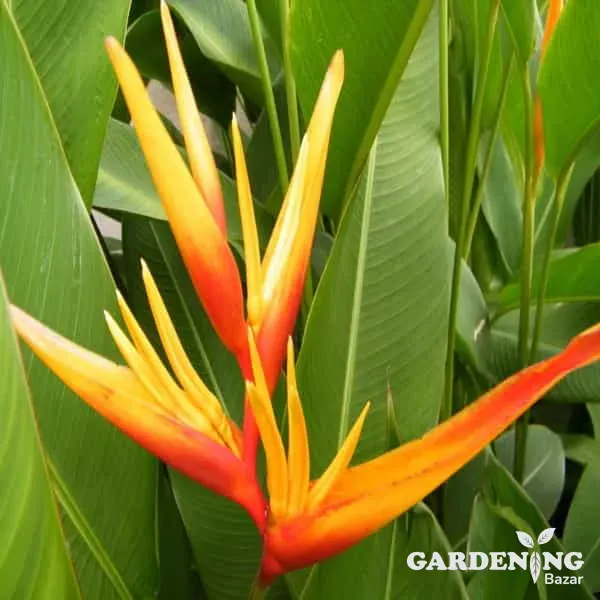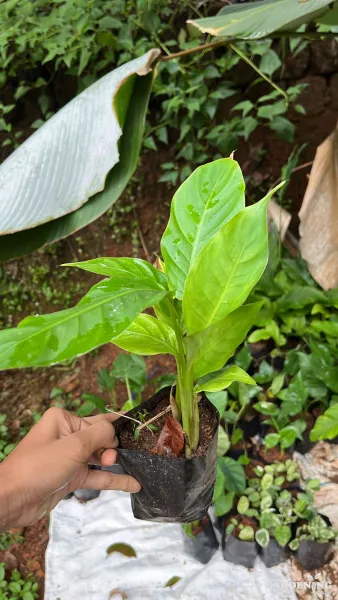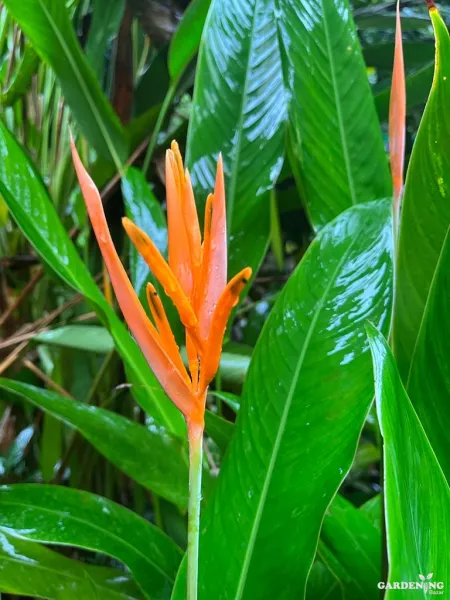Heliconia / Bird Of Paradise
By Homelyplants₹ 349
₹ 499.00 30% offProduct Description
Introducing the stunning Heliconia plant, a tropical beauty that's sure to captivate any garden enthusiast! With its vibrant and exotic appearance, the Heliconia adds a touch of paradise to any outdoor space. Known for its dramatic, bird-of-paradise-like blooms in brilliant shades of red, orange, and yellow, this plant is a showstopper in gardens or as a striking centerpiece indoors.
The Heliconia's lush, banana-like foliage complements its bold flowers, creating a lush and tropical ambiance. Easy to care for and thriving in warm, humid climates, it's perfect for tropical-themed gardens, poolside landscapes, or adding a splash of color to patios and balconies.
Whether you're a seasoned gardener or just starting out, the Heliconia plant is sure to bring joy and a touch of the exotic to your outdoor or indoor oasis.
Additional Details
| Container Type | Jiffy Bag |
| Quantity | 1 |
| Size | ~4-6" Inches |
| Soil | Heliconias prefer well-draining, fertile soil with good moisture retention. A mix of organic matter such as compost or peat moss can enhance soil quality. The soil pH should ideally be slightly acidic to neutral (pH 6.0-7.0), as Heliconias generally thrive in this range. Avoid waterlogged or compacted soils, as they can lead to root rot and other issues. |
| Watering | Water Heliconias regularly to keep the soil evenly moist but not waterlogged. Allow the top inch of soil to dry out between waterings. Adjust watering frequency based on environmental conditions, such as temperature and humidity. |
| Temperature | Heliconias thrive in warm temperatures between 65-85°F (18-30°C). They are tropical plants and may suffer damage if exposed to temperatures below 50°F (10°C) for extended periods. |
| Fertilizing | Heliconias benefit from regular fertilization during the growing season (spring and summer), as this promotes lush foliage and vibrant blooms. Use a balanced, slow-release fertilizer specifically formulated for tropical plants. Apply according to the manufacturer's instructions, usually every 4-6 weeks. Avoid over-fertilizing, as this can lead to excessive foliage growth at the expense of flowering. Organic fertilizers, such as compost tea or fish emulsion, can also be beneficial for Heliconias, providing essential nutrients in a natural form. |
| Pests and Diseases | Heliconias can be susceptible to pests like aphids, mites, and scale insects. Regularly inspect the leaves for any signs of pest infestation and treat them promptly with insecticidal soap or neem oil. Common diseases include fungal leaf spot and bacterial blight, which can be managed by improving air circulation and avoiding overhead watering. |
| light | Heliconias prefer bright, indirect light. They thrive in full sun but can also tolerate partial shade. Provide them with at least 4-6 hours of sunlight per day for optimal growth and flowering. |
| container type | If growing Heliconias in containers, choose large pots with good drainage holes to accommodate their root system. Use a well-draining potting mix and ensure the container is placed in a location with adequate sunlight. |
| leaf quantity | Healthy Heliconia plants produce a good number of leaves, typically in a rosette formation at the top of the stem. Monitor leaf production as excessive leaf drop or stunted growth may indicate underlying issues such as nutrient deficiencies or environmental stress. |
| pruning | Pruning is essential for Heliconias to remove dead or damaged leaves, spent flowers, and to promote healthy growth. Trim back old flower spikes to encourage new blooms. Use clean, sharp tools to avoid damaging the plant. |
| Seller Name | Homelyplants |
Questions





